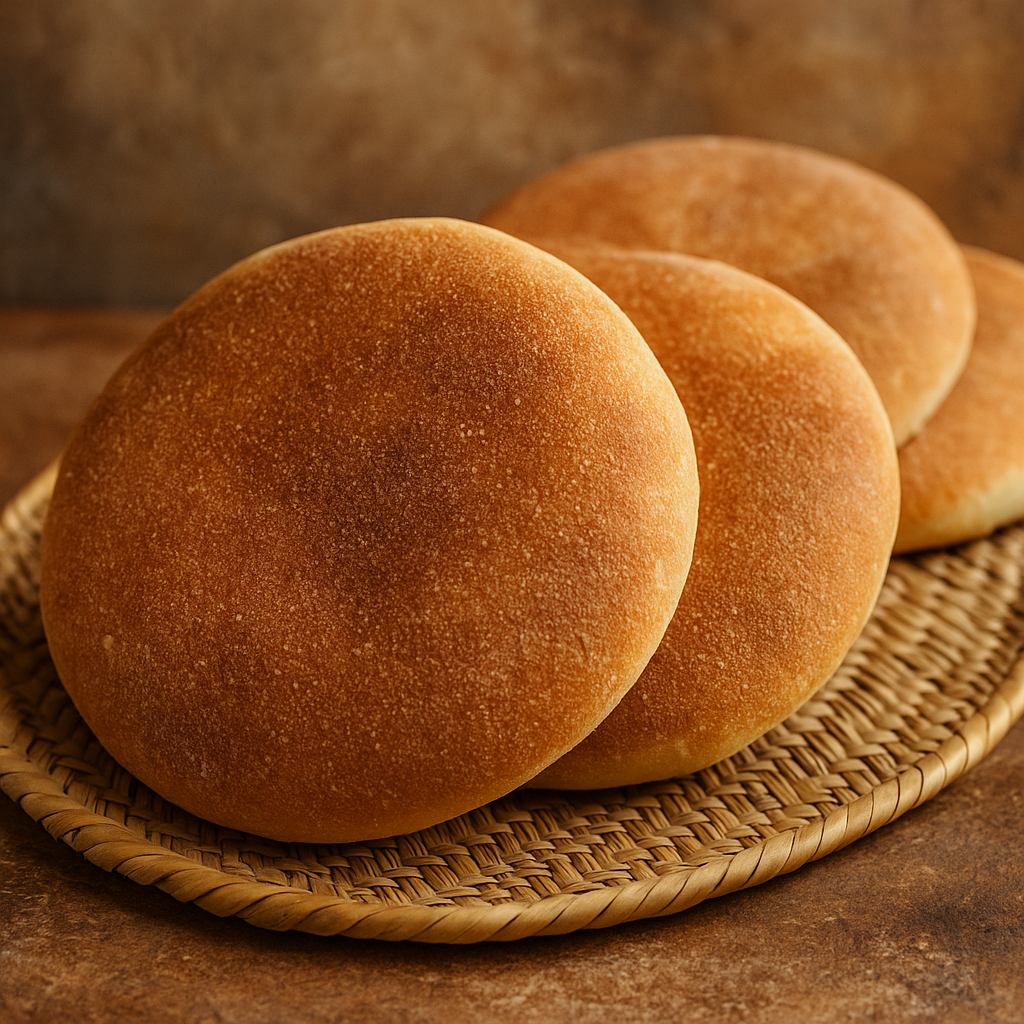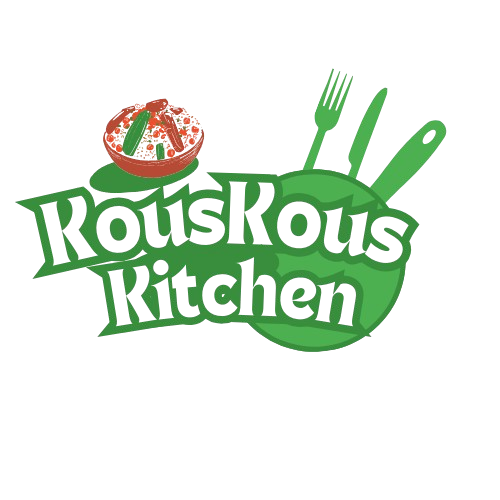In Moroccan homes, bread is more than a side dish—it’s the heart of the meal. Whether served with steaming bowls of Harira during Ramadan or used to scoop up vegetables from a tagine, khobz (Moroccan bread) is ever-present on the table. This guide shows you how to make traditional Moroccan bread at home with simple ingredients and authentic techniques.

Moroccan Bread + Family Traditions: A Daily Ritual
In Morocco, bread is baked fresh nearly every day. Many families bring dough to communal ovens, especially in rural areas or small cities. At home, khobz is baked in ovens or pans depending on what’s available.
During Ramadan, Moroccan bread takes on added significance. It’s used to break the fast with Harira, served alongside dates and boiled eggs. On Fridays, no couscous lunch is complete without fresh, golden khobz.
Related read: How to Make Traditional Moroccan Harira for Dinner
Types of Moroccan Bread
While “khobz” refers to the round, flat everyday Moroccan loaf, there are many variations:
- Classic Khobz: Oven-baked, round, and thick with a golden crust.
- Semolina Khobz (Harcha): Pan-cooked and softer, ideal for breakfast.
- Batbout: Moroccan pita-like bread, cooked on a griddle.
- Kesra (Berber bread): Rustic and thick, often baked in a clay oven.
In this guide, we focus on classic khobz — the most common Moroccan flatbread.
Related read: How to Make Authentic Moroccan Couscous for Lunch
Semolina + Flour: Finding the Right Mix for Khobz
The secret to authentic khobz lies in balancing all-purpose flour and fine semolina.
Why Use Semolina?
Semolina adds:
- A slight grainy texture
- A golden hue
- A crispier crust
Suggested ratio: 2 parts flour to 1 part semolina for ideal balance.
Ingredients for Moroccan Khobz Recipe
This recipe yields 2 medium loaves.
Ingredients:
- 2 cups all-purpose flour
- 1 cup fine semolina (or cornmeal as a substitute)
- 1 tablespoon sugar
- 1 teaspoon salt
- 1 tablespoon dry yeast
- 1 1/4 cups warm water (adjust as needed)
- 1 tablespoon olive oil (optional, for softness)
- Extra semolina or flour for dusting
Homemade Khobz Step-by-Step
Step 1: Activate the Yeast
In a small bowl, combine yeast, sugar, and 1/4 cup of the warm water. Let it sit for 10 minutes until frothy.
Step 2: Mix the Dough
In a large bowl, mix flour, semolina, and salt. Add the activated yeast and remaining warm water gradually. Knead until a soft, elastic dough forms.
Tip: You can use a stand mixer with a dough hook for about 6-8 minutes, or knead by hand for 10-12 minutes.
Step 3: Let It Rise
Cover the dough with a clean cloth and let it rise in a warm place for 1 hour, or until doubled in size.
Step 4: Shape the Loaves
Punch down the dough and divide it into two balls. Flatten each into a round disc (about 1/2 inch thick). Place on a floured baking sheet or dusted pan.
Step 5: Second Rise
Cover and let the loaves rise again for 30-45 minutes.
Step 6: Bake
Preheat your oven to 450°F (230°C). Use a fork to poke holes in the top of each loaf (to prevent bubbles).
Bake for 18-20 minutes until golden. For extra crunch, place a tray of water in the oven to create steam.
Tip: To simulate traditional oven baking, preheat a pizza stone or cast iron pan.
Khobz + Couscous: The Classic Friday Pairing
In Moroccan households, Friday is couscous day. After Jumu’ah prayers, families gather for lunch. Couscous is served in a large shared dish, and khobz is used in place of utensils.
Its role isn’t just functional—khobz completes the dish by soaking up broth and carrying each flavorful bite.
Related read: How to Make Moroccan Baghrir for Ramadan
Baking Methods: Traditional Oven vs. Pan Baking
Traditional Oven:
- Produces crispier crust and even browning
- Can bake multiple loaves at once
- Best with a pizza stone or preheated tray
Pan Baking (No Oven):
- Use a cast iron or heavy non-stick pan
- Cook on low heat for 7-8 minutes per side
- Flip only once, like a thick flatbread
While less traditional, pan-baked khobz is perfect for small kitchens or quick meals.
Tips for Better Texture, Flavor & Storage
- Rest your dough long enough: The second rise gives better fluff.
- Control hydration: Too dry = tough bread, too wet = sticky mess.
- Crust tip: Brush with olive oil before baking for a softer finish.
- Storage: Wrap loaves in a towel once cool. Freeze extras in zip bags.

Regional Variations of Moroccan Khobz
- Berber Villages: Clay oven-baked, thick and smoky
- Rural North: Added cornmeal or barley
- Urban Areas: Finer semolina, thinner crust, sweeter taste
These regional differences reflect local climate, crop availability, and baking methods.
Recipe Schema Markup
Traditional Moroccan Khobz (Bread)
Description: A traditional Moroccan bread made with semolina and flour, perfect for daily meals, Ramadan, or with couscous.
Prep Time:
Cook Time:
Total Time:
Yield: 2 loaves
Cuisine: Moroccan
Ingredients:
- 2 cups all-purpose flour
- 1 cup fine semolina
- 1 tablespoon sugar
- 1 teaspoon salt
- 1 tablespoon dry yeast
- 1 1/4 cups warm water
- 1 tablespoon olive oil
Instructions:
- Activate yeast with sugar and warm water.
- Mix dry ingredients and combine with yeast mixture.
- Knead to form a soft dough and rest for 1 hour.
- Shape into 2 rounds and let rest again for 30–45 minutes.
- Bake at 450°F (230°C) for 18–20 minutes until golden brown.
Author: Chef Nour
Conclusion
Now that you know how to make traditional Moroccan bread, you can bring a taste of Morocco to your kitchen anytime. Whether it’s served beside a tagine, as a scoop for couscous, or fresh with honey and olive oil at breakfast, khobz is a true staple worth mastering.
Want to complete your Moroccan table? Explore more:
